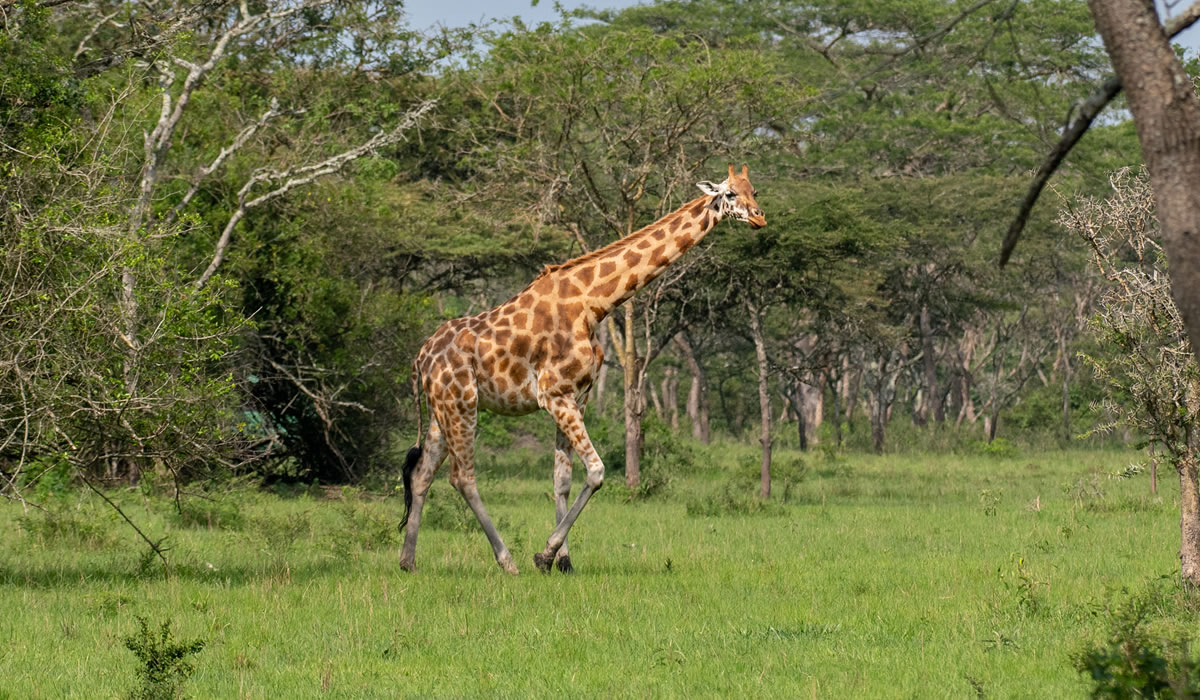Lake Mburo National Park is one of Uganda’s most accessible safari destinations and a true gem for travelers seeking wildlife, scenic beauty, and cultural encounters. Located in western Uganda, about 240 kilometers from Kampala and just a four-hour drive from Entebbe International Airport, it is the perfect stopover for tourists heading to Bwindi Impenetrable National Park for gorilla trekking or Queen Elizabeth National Park for big game safaris. Despite being the smallest savannah park in Uganda at 370 square kilometers, Lake Mburo offers a unique blend of landscapes, wildlife diversity, and activities that make it an essential part of any Uganda safari itinerary.

The park was gazetted in 1983 and is named after Lake Mburo, which lies at its heart and is surrounded by rolling hills, open savannah, and patches of woodland. Unlike other national parks in Uganda, Lake Mburo is a sanctuary for species that are rarely found elsewhere in the country. This makes it a must-visit destination for travelers looking to encounter Uganda’s varied ecosystems in one compact location.
Wildlife in Lake Mburo
Lake Mburo National Park is famous for its populations of herbivores, especially species that are absent from other Ugandan parks. It is the only park in Uganda where impalas are found in the wild, making it a key attraction for safari enthusiasts. The park is also home to large herds of zebras, topis, oribis, elands, and buffaloes. Giraffes were recently reintroduced to Lake Mburo, adding to its wildlife appeal. Hippos and crocodiles are abundant in the lake, while hyenas, jackals, and leopards are among the predators that roam the park.
Although Lake Mburo does not have elephants or lions in large numbers like other parks, this makes it an excellent place for walking safaris and horseback safaris. Without the risk of encountering elephants or prides of lions, visitors can safely explore the park on foot or horseback, getting closer to wildlife than in most other parks. This offers a unique and intimate experience that cannot be found in Uganda’s larger safari destinations.
Birdlife and Biodiversity
The park is a paradise for birdwatchers, with more than 350 bird species recorded. Lake Mburo itself and the surrounding wetlands attract a wide range of water birds including the African finfoot, papyrus gonolek, shoebill stork, and African fish eagle. Savannah birds such as lilac-breasted rollers, bare-faced go-away birds, and red-faced barbets are also common. The variety of habitats within the park, from wetlands and acacia woodlands to savannah grasslands, ensures that birdwatching is rewarding throughout the year.
The park’s vegetation is equally diverse, with rolling hills dotted with acacia trees, valleys filled with shrubs, and papyrus swamps around the five lakes that lie within its boundaries. This variety of ecosystems supports both herbivores and carnivores, making Lake Mburo a compact but rich safari destination.
Activities in Lake Mburo
Game drives are the most popular way to explore the park, especially in the open grasslands where zebras, antelopes, and buffaloes graze. Morning and evening drives are ideal for spotting wildlife, while night game drives offer a chance to see nocturnal animals such as bushbabies, porcupines, and leopards.
Boat safaris on Lake Mburo provide a completely different perspective of the park. Cruising along the shores, visitors can see pods of hippos, basking crocodiles, and a wide range of water birds. The boat trips are especially rewarding for photographers, as the views of wildlife set against the backdrop of the lake and hills are stunning.
Walking safaris are a unique feature of Lake Mburo, giving visitors the opportunity to explore the park on foot with an armed ranger guide. These walks allow close encounters with animals, as well as insights into the plants, tracks, and smaller creatures that might be overlooked on a game drive.
Horseback safaris are another activity that makes Lake Mburo stand out. Operated by Mihingo Lodge, these safaris allow guests to ride through the savannah alongside zebras, giraffes, and antelopes. It is an exhilarating way to connect with nature and enjoy the park’s scenery. Cycling safaris are also offered in some parts of the park, appealing to adventurous travelers who want to combine wildlife viewing with physical activity.
Cultural Encounters
Lake Mburo lies within the traditional lands of the Banyankole people, who are known for their cattle-keeping culture. Cultural tours to nearby communities provide an opportunity to learn about Ankole traditions, long-horned cattle, and the daily lives of local people. Visitors can participate in activities such as milking cows, making traditional ghee, or listening to folklore about the region. These cultural encounters complement the wildlife experiences and highlight the relationship between people and nature in this part of Uganda.
Accommodation Options
Lake Mburo National Park offers a variety of accommodation choices to suit all budgets. Luxury travelers can stay at Mihingo Lodge, which is set on a rocky kopje overlooking the park and offers stunning views, an infinity pool, and horseback safaris. Midrange options include Rwakobo Rock and Mburo Safari Lodge, both of which provide comfortable stays with great access to the park. Budget travelers can find affordable bandas and campsites run by the Uganda Wildlife Authority inside the park, offering basic facilities but unbeatable proximity to wildlife.
Whether you are looking for luxury or simplicity, staying in or near the park ensures an immersive experience, with the sounds of nature surrounding you day and night.
Accessibility and Location
One of Lake Mburo’s greatest advantages is its accessibility. Located along the highway that connects Kampala to western Uganda, the park is an ideal stopover for travelers heading to Bwindi, Mgahinga, or Queen Elizabeth National Park. It is only about a four-hour drive from Kampala and six hours from Bwindi, making it perfect for breaking up long journeys.
The park is also close to Mbarara, the largest town in western Uganda, where travelers can access additional services and amenities. Its convenient location makes it attractive for both short weekend trips and longer safaris that combine multiple parks.
Best Time to Visit
Lake Mburo National Park can be visited year-round, but the best time is during the dry seasons from June to September and December to February. During these months, the animals congregate around water sources, making them easier to spot, and the trails are more accessible. The wet seasons from March to May and October to November bring lush greenery and great birdwatching opportunities, but some roads and trails can become muddy.
Because the park is relatively small and not as heavily visited as other Ugandan parks, it rarely feels crowded, no matter the season. This makes Lake Mburo a great option for travelers seeking tranquility and intimacy in their safari experience.
Conservation Efforts
Lake Mburo National Park has faced challenges in the past, particularly conflicts between wildlife and surrounding communities. However, conservation efforts have improved through community involvement and revenue-sharing programs. Local communities now benefit from tourism through jobs, cultural experiences, and infrastructure development. This has reduced conflicts and encouraged locals to support conservation.
The Uganda Wildlife Authority has also worked to manage grazing and encroachment, ensuring that the park remains a haven for wildlife. The successful reintroduction of giraffes to Lake Mburo is a testament to these efforts, as the park continues to diversify its wildlife and enhance the visitor experience.
Why Visit Lake Mburo National Park
Lake Mburo National Park may be smaller than other parks in Uganda, but it offers an impressive range of activities and attractions. From game drives and boat safaris to walking, cycling, and horseback adventures, it provides experiences that are unique and unforgettable. Its proximity to Kampala makes it a convenient destination, while its diversity of wildlife, including species not found elsewhere in Uganda, adds to its appeal.
For travelers looking for a short safari, a stopover on the way to the gorillas, or an intimate wildlife experience away from the crowds, Lake Mburo is the perfect choice. It combines accessibility, variety, and cultural richness, making it one of Uganda’s most underrated yet rewarding safari destinations.
